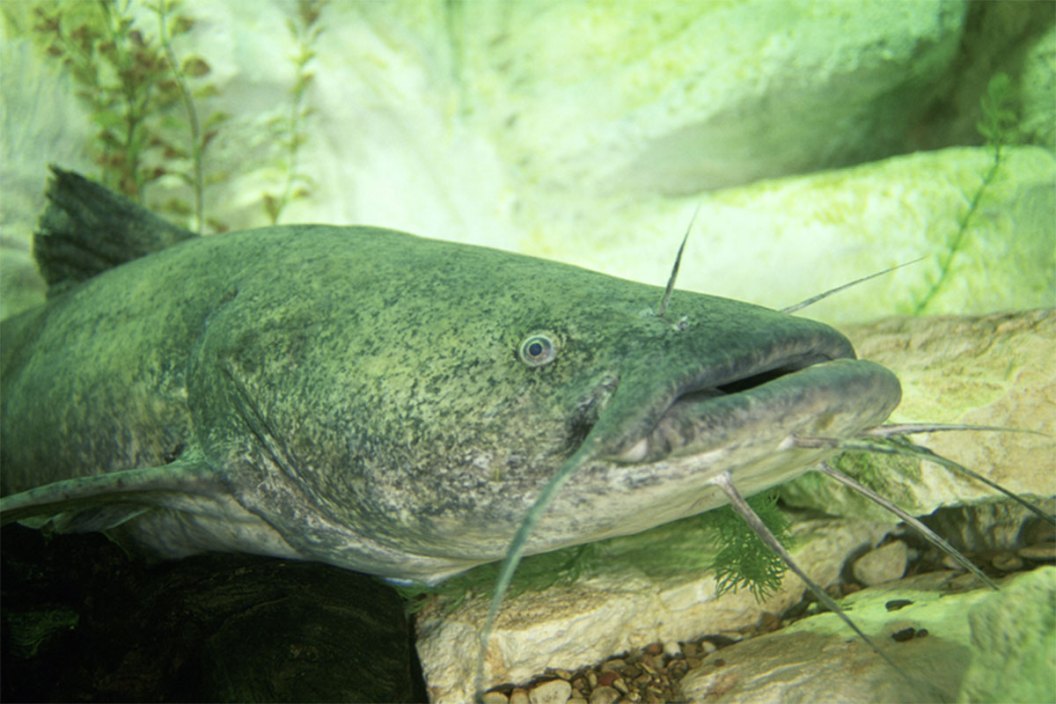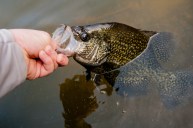Want to go fishing for flathead catfish? Here's your complete starter plan.
Flathead catfish range all the way from the lower Great Lakes through the Mississippi River basin to the Gulf states, and fishermen across their range know how fun it is to target and catch them.
The best part about the venerable flathead? Unlike other catfish, which are mostly scavengers, flatheads prey almost exclusively on live fish.
According to the Texas Parks & Wildlife Department, "Young flathead catfish feed mostly on invertebrates such as worms, insects and crayfish. When 10 inches or larger, their diet consists entirely of fish: shad, carp, suckers, sunfish, largemouth bass and other catfish."
Now that we have your full angling attention, let's look at what it takes to hook up with one, where to find them, and what kind of gear to use.
Since there are entire angling societies dedicated to catching and talking about flathead catfish, it shouldn't be too difficult to find plenty of information about these great sportfish and how to catch them.
Flathead Catfish 101
Also called the yellow cat, Opelousa cat, pied cat, Mississippi cat, mud cat, and the shovelhead cat, the flathead catfish can live from 10 to about 14 years old, and sometimes much longer. They can grow to over 100 pounds in some cases.
Flatheads are second only to the blue catfish in size, and rank a close second to the beloved channel catfish as a sportfish. Flatheads dwell mostly in the deeper pools of streams, rivers, lakes and reservoirs where the water is stained and the currents slow to a sluggish tempo.
As its common name states, the flathead catfish has the flattest head of all the catfish, but the same similar smooth, scaleless skin, and "whiskers" or barbels around their mouths. Adults are generally solitary creatures, and don't swim in schools.
The males often use hollow logs, caves, or hollowed out areas beneath the banks for their nest sites, and may even improve these sites for their mate by fanning shallow depressions for the female to lay her eggs. Egg producing females can turn out great numbers of eggs depending on their size, but the average is up to 100,000 at a time. In low-water years, only a small number will survive.
Fishing for Flathead Catfish
At 123 pounds, the IGFA all-tackle world record for a flathead catfish was taken from the Elk City Reservoir in Kansas way back in 1998. Judging by the photos, be hopeful that a monster like that isn't the one you just stuck your arm inside of its mouth under a log jam while noodling.
As stated, flathead cats prefer live bait such as suckers, chubs, bluegill, sunfish, and even goldfish. Make sure to check your local and state regulations to make sure that such bait is legal to use.
Flatheads, like other catfish, use their whiskers as sensory organs to detect prey in the murky, turbid waters where they live. Typically, they will aggressively smash them and there will be little doubt when a flathead takes your bait.
Flatheads are ambush predators that like to wait out their prey around submerged logs, driftwood, snags, and rocky outcroppings that they can hide in. These are the areas to focus your attention on when targeting these fish, meaning that you are going to need some heavy-duty tackle to get the job done.
Since this species of catfish doesn't get on well with one another, if you do land one fish in a prime spot, think about moving on since there are rarely multiple flatheads in the same vicinity.
Stink baits along with other smelly offerings like chicken livers, cut bait, and even crawfish, can catch some younger flatheads. If you're going after big flatheads, it's best to stick with healthy and active live bait. After dark, flatheads tend to become more active, leaving their solitary hideouts and moving into more open waters to feed.
This is when you're more likely to catch them on baits presented on the bottom near structure features that they prefer. As with a lot of fishing, creek channels, tributary mouths, and underwater humps are among the most productive spots after the sun goes down.
Flathead catfish can be caught from the shore, in a boat, and definitely during the daylight hours with the best time of the year being in the summer.
Flathead Catfish Gear
If you ask five different catfishing enthusiasts you may get five different answers, but many flathead anglers prefer rods in the seven-foot long or slightly longer range with a medium-heavy action.
Your rod should be able to cast your bait a reasonable distance but be sensitive enough to detect a light bite. Italso needs to be strong enough to out-muscle a good-sized fish.
As far as reels go, baitcasting or spincasting rigs are a matter of choice with both having their strong points. For fishing from the bank, a spinning reel may be more appropriate since they are easier to cast. For the serious boat fisherman who anchors their craft just off of the current flow, a baitcasting rig might be the best choice to simply float your offering into the right cover.
As you can imagine, good line choices need to be made for big, aggressive fish that will take you deep into their haunts. They will swim towards downed timber and under rocks and blow downs, which will really put your line to the test.
Many veteran anglers will still choose 20- to 30-pound test mono in conjunction with a good quality reel, simply because the drag system should do the rest. For those that want to be sure, a good quality braided line is well known for its resistance to abrasion. That's important when targeting flatheads in the deepest cover, and braided line can be used in the same sizes.
One upside to using braid is that it cuts through the current better, but one downside is the wear and tear on your reel when trying to break free from a snag.
Slip bobbers, 1-2 ounce no-roll weights, and 8/0 to 10/0 circle hooks are the order of the day. As with any type of fishing, there are almost limitless choices, but these seem to be the most popular.
The Last Word
The first time that I ever fished for catfish was in the Merritt Reservoir in the Nebraska Sandhills with my grandfather and uncle when I was about 10 years old.
This was also the first time that I ever heard the tall tales of "catfish the size of a car."
We used bait that was caught when we got there, and I may have crossed my uncle's line a time or two, but it was the greatest night of catfishing I ever had.
There are of course differences between fishing for blue cats, channel cats, and even bullheads when it comes to catching whisker lips in freshwater. When you're targeting this species, remember that catching flatheads and catching giant flatheads are two different things. The difference involves hooking young, eater-size fish and trying to outfox big, mature cats that have had a lifetime of refusing what fishermen have to offer.
Where flathead catfish live, the best fishing comes when the water temperatures begin to rise and the baitfish begin to move. It is then that trophy flatheads start to feed in earnest, and big fish begin to fall to catfishing anglers everywhere.
Looking for a little more or even hot lunch for your hunting blind? Follow my webpage, or on Facebook and YouTube.
NEXT: 4 ELECTRIC FISHING REELS THAT WILL MAKE YOU WANT TO SELL YOUR CAR
WATCH





